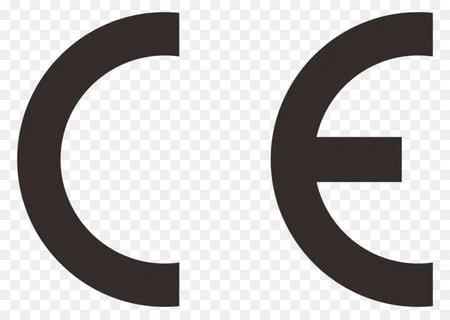
CE marking Meaning & Definition
What is CE Marking?
The CE marking, also known as the Conformitè Europëenne Mark (which translates to European Conformity) is a
mandatory conformity marking required in the European Union for regulating the sale of goods throughout the European Economic Area. It became a requirement in 1985 and is used as a declaration
by the manufacturer that the marked goods are in compliance with the EU’s New Approach Directives.
Essentially, any product that has the CE marking is deemed to meet the high safety, environmental, and health requirements as needed throughout the European Economic Area (EEA). The CE marking
also allows for fair competition, as all companies must abide by similar rules.

Why is CE Marking Important?
Every time you buy commercial products, such as a television set, a toy, or a mobile phone in the EEA, you’ll notice the CE marking on the box. This is a manufacturer’s decree that the goodsmeet all the legal requirements for sale in the EEA.
It is important to note that the CE marking is also required for goods that are manufactured in other countries but are intended for sale in the EEA.
The CE marking is important for both businesses and consumers. Businesses get the freedom to sell their goods throughout the European Economic Area without having to worry about restrictions
once they meet all the legal requirements.
As for consumers, the CE marking instils confidence in them that the products are held to the same high standards of health, safety, and environmental protection across the EEA.
If a product is not compliant with the legal requirements, the CE marking cannot be used. If a manufacturer adds the CE mark on products that do not comply with the legal requirements, they are
deemed to have committed a criminal offence.
It is important to note that the CE mark cannot be substituted for a quality mark.

Which Products Require the CE Marking?
The process for determining which products require the CE marking is not straightforward. Before applying for CE certification, it is important for manufacturers to confirm a few things:
- The countries in which they plan to sell the products. All countries within the European Economic Area or the European Free Trade Association (EFTA) require the CE marking.
- Is the product covered by one or several CE Marking Directives? This includes the Low Voltage Directive or the EMC Directive. For instance, toys
must also comply with the Toy Safety Directive. - Will the products be sold in Turkey? Even though Turkey is not a member of the EU or a part of the EEA, Turkey has implemented requirements for CE Marking Directives, so products to be sold
in Turkey will also require the CE marking.
Some common product categories that require CE marking are as follows:
- Electronic goods
- Electrical goods and equipment
- Medical devices
- Lifts
- Hot water boilers
- Toys
- Radio and telecom equipment
- Pressurized equipment
- Personal protective equipment (PPE)
- Machinery
- Gas-powered appliances
Some product categories that aren’t covered by any CE marking directives include:
- Chemicals
- Pharmaceutical goods
- Foodstuffs
The Responsibility for the CE Marking
The responsibility for the CE marking is with the entity that brings the products to market. For instance, it could be a manufacturer based in the EU, or it could be an importer or a
distributor of a product that’s manufactured outside the European Union.
Importers must ensure that the manufacturer who is based outside the European Union has taken all necessary steps and have the appropriate documentation. It’s also important for importers to
establish contact with manufacturers.
And, distributors within the EU must be able to demonstrate to the relevant authorities that they have acted with due care and they have received confirmation from the manufacturer that all
necessary steps have been taken.
In certain situations, if the level of risk is relatively low, the manufacturer can also self-certify the products, affixing the CE marking themselves on the product. This is only viable for
products deemed to carry minimal risk.
The manufacturer is responsible for investigating whether the product requires a CE marking, and if it does, they must select the assessment procedure from the different modules that apply to
the product.
How to Get the CE Marking
To get the CE marking for specific products, here are the steps that companies need to follow:
Step 1: Define the Intended Use for the Product
The first step requires manufacturers to provide a detailed description for how the product is going to be used. The intended purpose of the product is necessary as it will be used in
determining the relevant regulations.
Step 2: Determining Relevant CE Regulations
Currently, there are more than 25 different CE regulations and directives that can apply to different product categories. In some cases, several CE directives may apply to one product.
Step 3: Determine the Relevant Requirements Before Applying for the CE Regulations
Before applying for the CE marking, it is important to ensure that the product meets all relevant requirements.
Step 4: Conduct the Conformity Assessment
This part involves testing, risk assessment, calculations, or any visual inspections to determine whether the product meets the essential requirements.
Step 5: Create a Document that Details Important Information About Using the Product Safely
This is a necessary step and usually requires companies to include a user manual with the product, as well as adding any relevant warning labels.
Step 6: Ensure Consistency in Production Quality
It is also important that the product quality remains consistent so that all products are held to the same standard.
Step 7: Prepare Technical Documentation
Technical documentation related to the product’s safety and conformity with different requirements must be added in a Technical File.
Step 8: Prepare and Sign the EU Declaration of Conformity
This is the final step before applying the CE marking to your products.
Step 9: Use the CE Marking
Companies can now use the CE marking on their products.
Step 10: Regularly Review EU Directives
It is important for relevant parties to review EU directives and ensure that they comply with any new regulations.
Use The EcoOnline Platform to Manage Asset Data
If you’re using CE markings on your products, the EcoOnline Platform offers an excellent Asset Register module that lets you compile all the information in a centralized dashboard.
This makes it easy for businesses to manage product functionality and track important data through a cloud-based, integrated platform.



